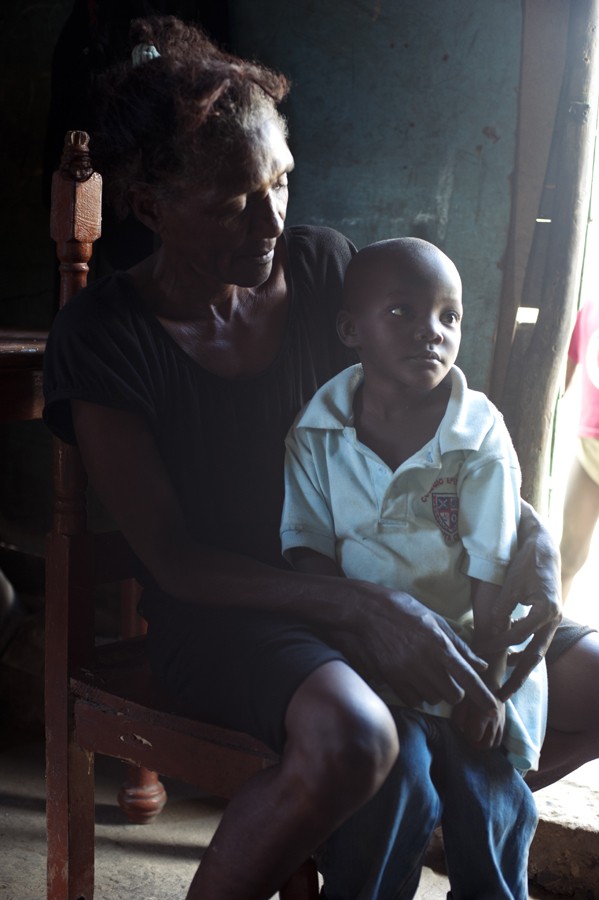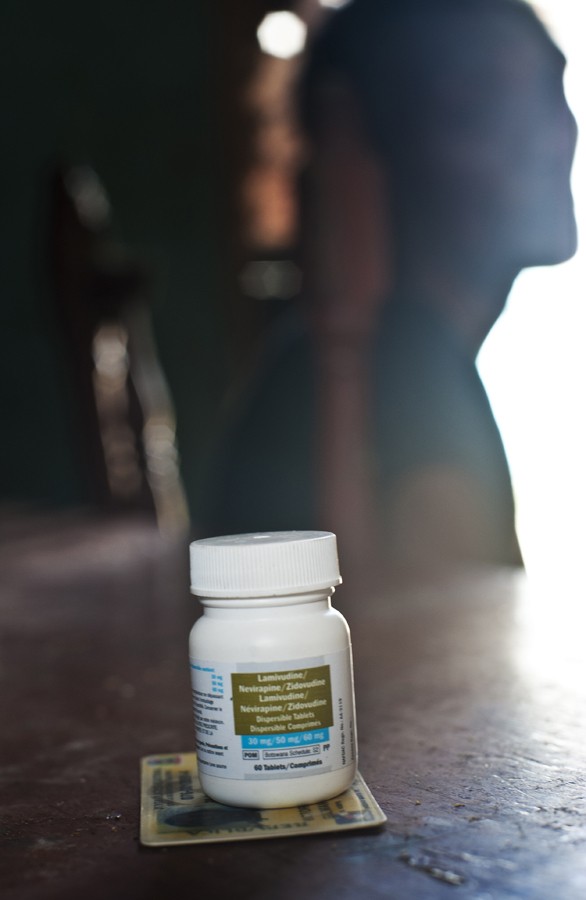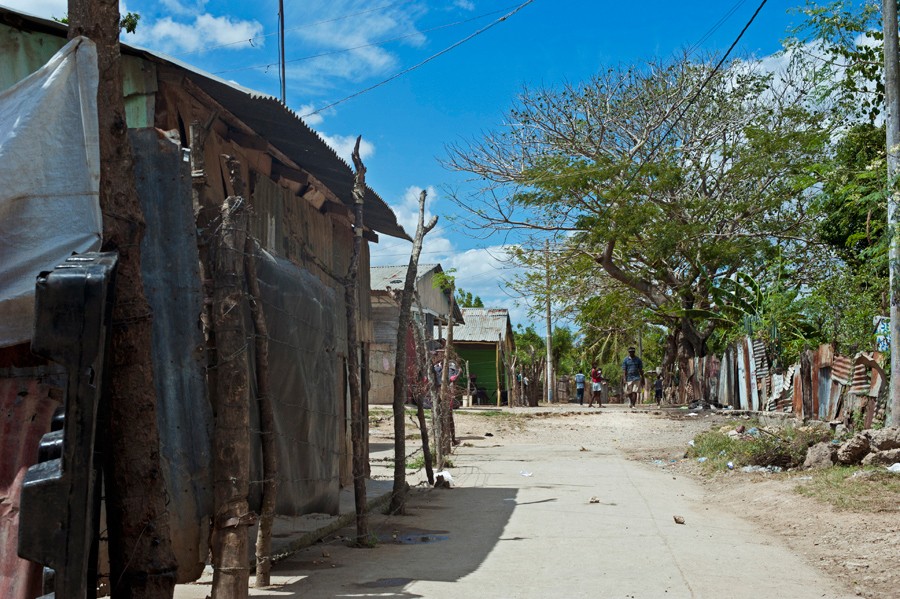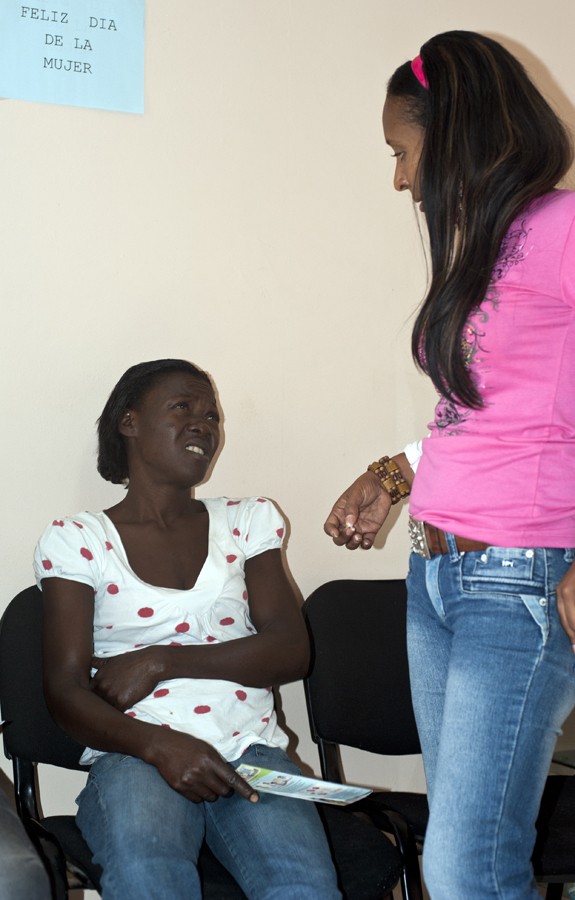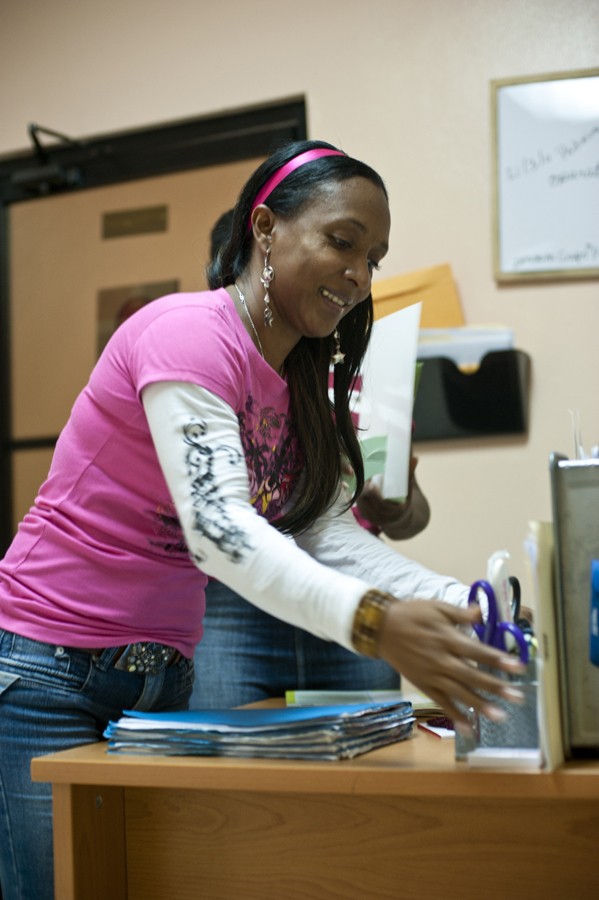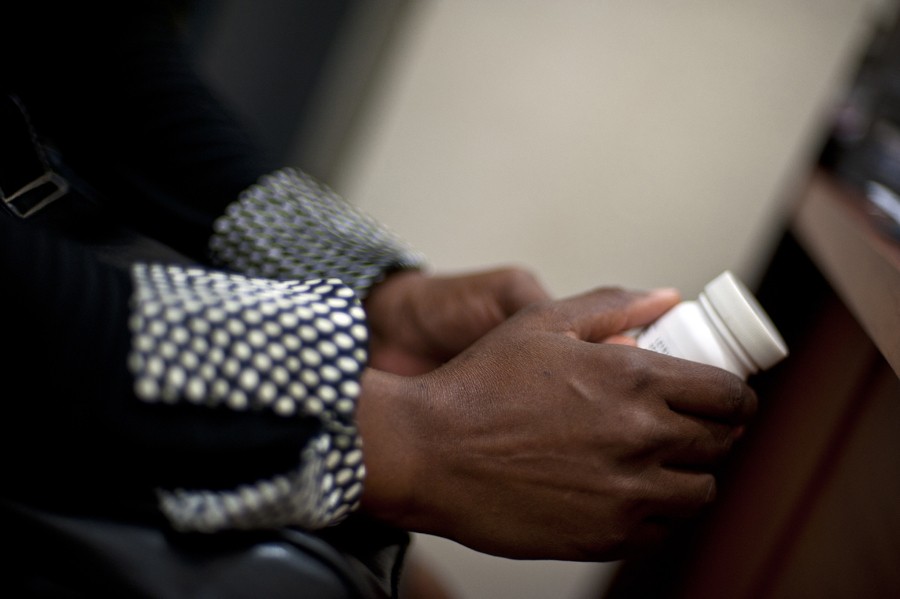Island of Hispaniola Struggles to Control HIV

Clarification: A previous version of this article did not fully explain the funding scenarios presented to Global Fund’s donors in a meeting last October. That information has been added and the the article has been revised to clarify the Global Fund’s response to a drop in its donations.
BY SERENA DEL MUNDO
Cronkite Borderlands Initiative
SAN PEDRO DE MACORIS, Dominican Republic – Rammon ran into the makeshift hovel, kicked off his dusty shoes and jumped into the arms of his waiting brothers and sisters.
The 5-year-old’s forehead was smeared with green paint – evidence of a school day filled with art and activity. Victoria Guzman, his stand-in mother, picked him up and planted a slobbery kiss on one plump cheek.
The only difference between Rammon and his brothers and sisters, said Guzman, is the “vitamin” he takes every morning. That “vitamin” is Zidovudine – an antiretroviral that keeps Rammon’s HIV load low and his infection-fighting CD4 cells high.
Rammon contracted HIV from his biological mother, who left him in Guzman’s care when he was just 25 days old. The drugs he takes would normally cost almost $2,000 a year, but he gets them free, thanks to international health agencies that fund much of the HIV treatment in the Dominican Republic.
Now that funding is in jeopardy.
 SLIDESHOW: Rammon Hernandez is one of many children afflicted with HIV in the Dominican. |
The Global Fund, the world's leading financer of programs to fight AIDS, TB and malaria, gave the Dominican Republic almost $82 million over a seven-year period for HIV prevention and treatment efforts. But that funding is expected to drop dramatically in coming years.
Ironically, the country may be too rich. Even though more than 40 percent of its 10 million people live in poverty and the average per capita income is just $8,300 a year, the Global Fund categorizes the Dominican Republic as “lower-middle income.”
Compounding the problem is the fact that the Global Fund’s overall support for HIV treatment is down. At an October meeting with its donors in New York, the fund's managers outlined what could be achieved with various funding levels ranging from $12 billion to $21 billion. Donors subsequently pledged $11.7 billion.
Funding took another hit after The Associated Press reported in January on corruption in the administration of grants supported by the Global Fund. The AP cited the fund’s own investigative report into grant recipients suspected of forging documents and pocketing money.
Global Fund officials attacked the article for “serious misrepresentations and factual inaccuracies.” A follow-up AP story cited fund officials and outside experts who said the Global Fund has less corruption and fights it more aggressively than most aid organizations, but the damage had been done.
“Some donors have suspended their contributions to the Global Fund,” spokeswoman Marcela Rojo said.
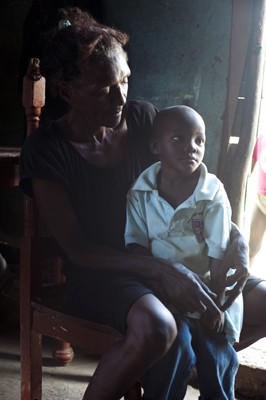
Victoria Hernandez holds her foster son, Rammon, who must take daily antiretroviral drugs to treat his HIV. Photo by Lindsay Erin Lough |
“We are at a critical crossroads,” said Sharonann Lynch, HIV/AIDS policy adviser for Doctors Without Borders during an open webcast. “You have a situation that the funds available for treating HIV, for scaling up prevention is shrinking right at the moment we can get ahead of new infections."
HIV Help
The island of Hispaniola, which the Dominican Republic shares with Haiti, has the highest HIV rates in the world outside of sub-Saharan Africa, according to the United Nations.
In three of the largest cities, including the capital of Santo Domingo, HIV rates range from 1 percent to 9.9 percent. The U.S. rate of HIV infection, by comparison, is about 0.2 percent of the general population.
Far fewer people die of AIDS than once was the case. AIDS-related deaths have dropped worldwide by 40 percent since antiretroviral drugs have become widely available, according to the United Nations.
Expensive antiretrovirals were largely unavailable to poor people in developing countries like the Dominican Republic until the late 1990s and the early 2000s when international humanitarian agencies and world leaders made it a priority. Among the agencies that have been working on the problem are the Global Fund, former President George W. Bush's President’s Emergency Plan for Aids Relief, the U.S. Agency for International Development and the Clinton Foundation, founded by former President Bill Clinton.
Not only do the drugs save the lives of those being treated, they save the lives of those closest to them. Patients on these medications have a decreased viral load, making it less likely for HIV to spread from mother to child or from husband to wife. There is less maternal mortality, less infant mortality, less tuberculosis – the benefits go and on, Lynch said.
For children like Rammon, the medications mean the chance to live a reasonably normal life.
“When Rammon entered our clinic, he was a bag of bones,” said his physician, Michael Dohn. His transformation is nothing short of a miracle, Dohn said.
But that miracle depends in large part on international aid, said Bethania Betances, program officer in Santo Domingo for UNAIDS, the United Nations program to combat and prevent the disease.
“The HIV response in the country is being moved by international funds,” she said.

Rammon Hernandez, 5, is being treated for HIV. Photo by Lindsay Erin Lough |
Betances worries that the Dominican government will have to fill in the treatment gaps as funding dries up, which would strain an already overloaded public-health system.
Health care is available to all Dominican residents. Anyone can go to their local hospital, get tested for HIV and, if they test positive, get the necessary medications. However, that doesn’t mean health care is equal for everyone.
“The Dominican Republic claims universal access to health care, but that’s not the case even for poor Dominicans,” said international public health specialist Judith Kaine. “The roll-out of services is imbalanced and unequal.”
There are two main branches of the Dominican health system – public and private. Eddy Perez-Then, director of the country’s National Research Center for Maternal and Child Health, said the private branch is largely available only to wealthier Dominicans. The public branch provides access for about 75 percent of the population, but there is no guarantee to access or quality of services.
If the government has to pay the costs of expensive drugs, procedures and prevention for HIV patients, some fear that at-risk groups could be pushed out of the system based on their immigration and economic status.
“What we’re hoping for the Global Fund to see is that even though we are a middle-class country, there is a lot of inequity,” said UNAIDS Monitoring and Evaluation Adviser Yordana Dolores.
And that would leave people like Pablo, a Haitian man without papers, living with HIV in San Pedro de Macoris, unable to get treatment.
One Man’s Treatment
When Pablo, who did not want to give his last name, comes into the local clinic’s office, he creates a buzz. He is tall and handsome and has an infectious smile that remains even as he recounts his personal struggle.
“When I found out I had HIV, I wanted to die,” he says matter-of-factly.
Pablo becomes animated as he tells his story of living as a gay man with HIV in a country in which 95 percent of the population is Catholic and gay people often encounter strong disapproval.
When he was diagnosed with HIV, Pablo assumed he was going to die, just like his partner before him.
“The people in his barrio, his mom and dad, think he died of lung cancer,” Pablo said of his partner. “I know he died of HIV.”
Soon after his partner's death, Haiti was hit by the 7.0 magnitude earthquake that killed more than 300,000 people and left 1 million homeless.
“All of my family died in the earthquake,” Pablo said. “And the pain was killing me.”
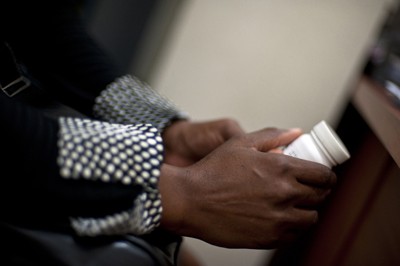
At Clinica Esperanza y Caridad, an American non-profit clinic in the Dominican Republic, patients with HIV receive free anti-retroviral medicine. Photo by Lindsay Erin Lough |
What saved him, Pablo said, was support from Clínica Esperanza y Caridad and the encouragement of clinic staff members like Daysi Payano.
Clínica Esperanza y Caridad, like many other health clinics, was started with funds from the Clinton Foundation. It continues to operate with public and private funding.
Payano heard about Pablo’s case and went to his house. She told him again and again that he was not going to die. She told him that she, too, was living with HIV.
“I know firsthand . . . how to live with it, because it’s in my blood, so I want to help people who have it” Payano said.
Payano is a force at the clinic. People seek her out constantly, interrupting meetings and thrusting messages in her face. She glides through the clinic and calmly handles all demands.
She says she is a consultant at the clinic, but she is much more: She is an advocate for people living with HIV, like Pablo.
With his family now gone, Pablo said he consider Payano and the people at the clinic his family. He celebrates holidays with the clinic staff and members of his therapy group for people living with HIV.
“They don’t discriminate, and they don’t care if I’m gay,” he said.
And every day, Pablo takes his medication — antiretrovirals that physician Luisa Reyes said are provided by the Global Fund.
“I have a cell phone that I set for 9 a.m. and 9 p.m., and I take one pill each time,” Pablo said.
These pills allow Pablo to leave his house and embrace life again. And they make it possible for Rammon to run home from school covered with green paint.
For now.

